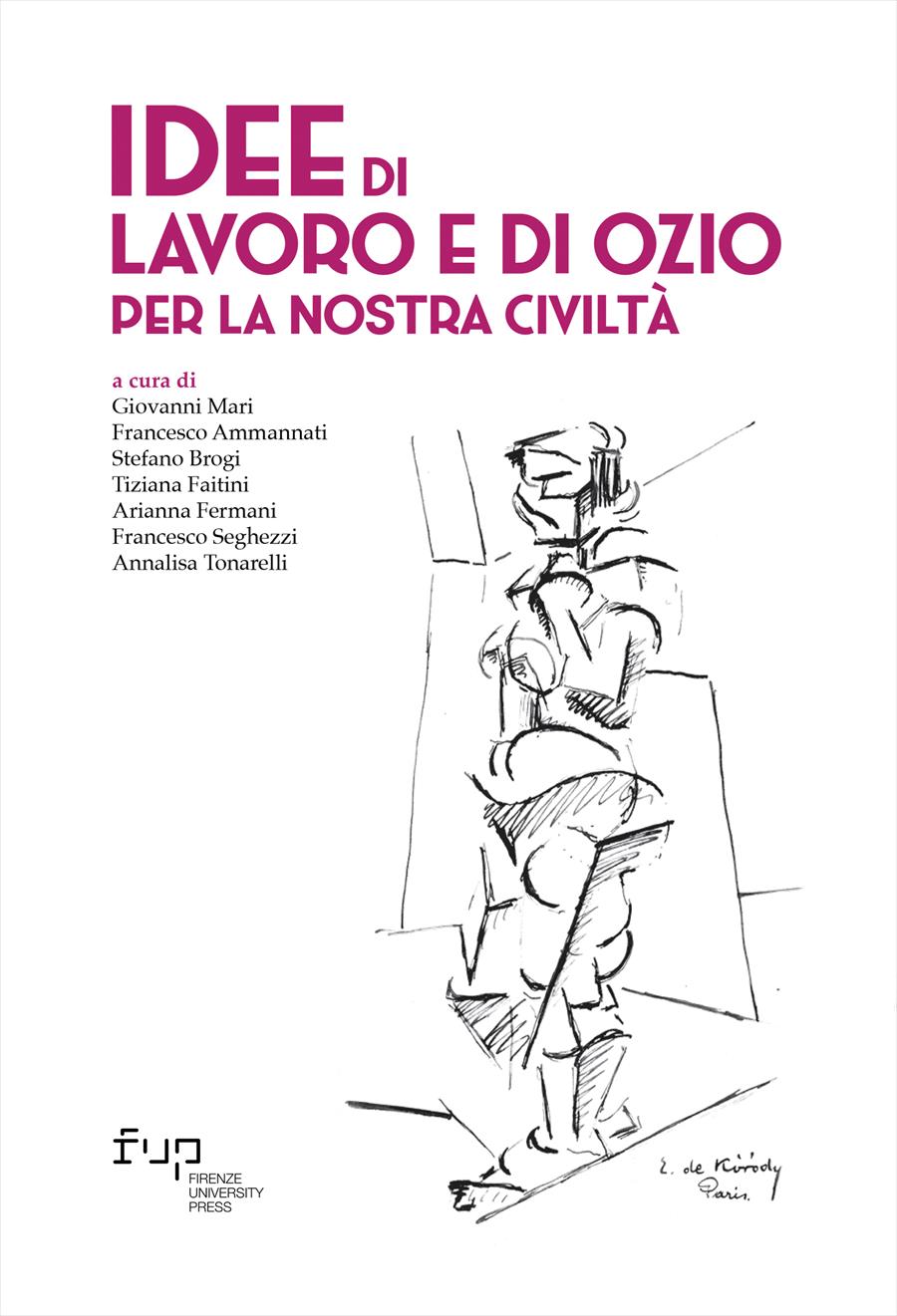- Idee di lavoro e di ozio per la nostra civiltà
- A cura di Giovanni Mari, Francesco Ammannati, Stefano Brogi, Tiziana Faitini, Arianna Fermani, Francesco Seghezzi, Annalisa Tonarelli
Arti liberali e meccaniche secondo Ugo di san Vittore
- Amalia Salvestrini
- © 2024 Author(s) |
- CC BY 4.0
- DOI: 10.36253/979-12-215-0319-7.24
The contribution explores the valorisation of human labour in the Didascalicon by Hugh of Saint Victor. Following a brief outline of Hugh’s life and main works, one underlines the principal points of interest of his classification of philosophy. 1. For the first time the mechanical arts are part of philosophy, albeit considered in their theoretical aspect. 2. Hugh proposes a parallel between liberal and mechanical arts, according to which the external sphere of the trivium and the internal one of the quadrivium correspond to the seven mechanical arts. 3. The organic nature of the division depends from the idea that humanity lost its perfect condition with original sin, hence the need to repair both the spiritual and the bodily part of man with the liberal and mechanical arts.
- Keywords:
- Hugh of Saint Victor,
- Liberal Arts,
- Mechanical Arts,
- Labour,
- Knowledge classification,
University of Milan, Italy - ORCID: 0000-0001-6598-6171
- Agostino d’Ippona. 1984. La città di Dio, introduzione, traduzione, note e appendici di Luigi Alici. Milano: Rusconi.
- Alessio, Franco. 1983. “La riflessione sulle «artes mechanicae».” In Lavorare nel medio evo. Rappresentazioni ed esempi dall’Italia dei secc. X-XVI. Atti del XXI Convegno storico internazionale, 257-93. Spoleto: Centro Italiano di Studi sull’Alto Medioevo.
- Allard, Guy H. 1982. “Les arts mécaniques aux yeux de l’idéologie médiévale.” In Les arts mécaniques au Moyen Âge, édité par Guy H. Allard, et Serge Lusignan, 13-31. Montréal-Paris: Bellarmin-Vrin.
- Augustinus. 1955. De ciuitate Dei, édité par Bernhard Dombart, et Alfons Kalb. Turnhout: Brepols (CC SL 48).
- Casagrande, Carla, e Silvana Vecchio. 1989. “L’interdizione del giullare nel vocabolario clericale del XII e XIII secolo.” In Il teatro medievale, a cura di Johann Drumbl, 317-68. Bologna: il Mulino.
- De Capitani, Franco. 2000. “Ugo di san Vittore e il problema delle ‘artes mechanicae’.” Rivista di Filosofia Neo-Scolastica 92, 3/4: 424-60.
- Hugo de Sancto Uictore. 1939. Didascalicon de studio legendi, edited by Charles H. Buttimer. Washington, D.C.: Caholic University Press.
- Panti, Cecilia. 2011. “Arti liberali e arti meccaniche fra sapientia, natura e scientia nei libri I e II del Didascalicon di Ugo di San Vittore (e nei commenti di Boezio all’Isagoge).” In Ugo di San Vittore: atti del 47. convegno storico internazionale: Todi, 10-12 ottobre 2010, 411-40. Spoleto: Fondazione Centro italiano di studi sull’alto medioevo.
- Poirel, Dominique. 1997. Ugo di San Vittore. Storia, scienza, contemplazione. Milano: Jaca Book.
- Poirel, Dominique, édité par. 2010. L’école de Saint-Victor de Paris: Influence et rayonnement du Moyen Âge à l’Époque moderne. Turnhout: Brepols.
- Salvestrini, Amalia. 2020. “Artifex.” In Glossary of Morphology, edited by Federico Vercellone, and Salvatore Tedesco, 37-40. Cham: Springer.
- Salvestrini, Amalia. 2023. L’artefice nel pensiero francescano, prefazione di Olivier Boulnois, Milano: Milano University Press.
- Ugo di San Vittore. 1987. Didascalicon, a cura di Vincenzo Liccaro. Milano: Rusconi.
- Vecchio, Silvana. 2018. “‘Nec mimus, nec histrio’: l’ars theatrica nel XII secolo.” In Vedere nell’ombra: studi su natura, spiritualità e scienze operative offerti a Michela Pereira, a cura di Cecilia Panti, e Nicola Polloni. 45-55. Firenze: SISMEL.
- Vermeirre, André. 1982. “La navigation d’après Hugues de Saint-Victor et d’après la pratique au XIe siècle.” In Les arts mécaniques au Moyen Âge, édité par Guy H. Allard, et Serge Lusignan, 51-61. Montréal-Paris: Bellarmin-Vrin.
- Whitney, Elspeth. 2000. “Paradise Restored. The Mechanical Arts from Antiquity through the Thirteenth Century.” Transactions of the American Philosophical Society 80, 1: 1-169.
- Arnoux, Mathieu. 2010. “Hugues de Saint-Victor entre mystique et sociologie: réflexions sur le statut du travail dans le Didascalicon.” In L’école de Saint-Victor de Paris: Influence et rayonnement du Moyen Âge à l’Époque moderne, édité par Dominique Poirel, 227-44. Turnhout: Brepols.
- Baron, Roger. 1957. Science et sagesse chez Hugues de Saint-Victor. Paris: Lethielleux.
- De Capitani, Franco. 2005. “Ugo di san Vittore e la valorizzazione culturale delle Artes mechanicae.” In Franco De Capitani, Male, libertà, anima e arti, 239-75. Paris-Torino: Vrin-Aragno.
- Poirel, Dominique. 2015. “Ugo di san Vittore e le arti meccaniche.” In Pensieri nascosti nelle cose. Arte, cultura, tecnica, a cura di Giulia Lombardi, e Mauro Mantovani, 96-109. Roma: LAS Angelicum University Press.
Informazioni sul capitolo
Titolo del capitolo
Arti liberali e meccaniche secondo Ugo di san Vittore
Autori
Amalia Salvestrini
Lingua
Italian
DOI
10.36253/979-12-215-0319-7.24
Opera sottoposta a peer review
Anno di pubblicazione
2024
Copyright
© 2024 Author(s)
Licenza d'uso
Licenza dei metadati
Informazioni bibliografiche
Titolo del libro
Idee di lavoro e di ozio per la nostra civiltà
Curatori
Giovanni Mari, Francesco Ammannati, Stefano Brogi, Tiziana Faitini, Arianna Fermani, Francesco Seghezzi, Annalisa Tonarelli
Opera sottoposta a peer review
Numero di pagine
1894
Anno di pubblicazione
2024
Copyright
© 2024 Author(s)
Licenza d'uso
Licenza dei metadati
Editore
Firenze University Press
DOI
10.36253/979-12-215-0319-7
ISBN Print
979-12-215-0245-9
eISBN (pdf)
979-12-215-0319-7
eISBN (epub)
979-12-215-0320-3
Collana
Studi e saggi
ISSN della collana
2704-6478
e-ISSN della collana
2704-5919
